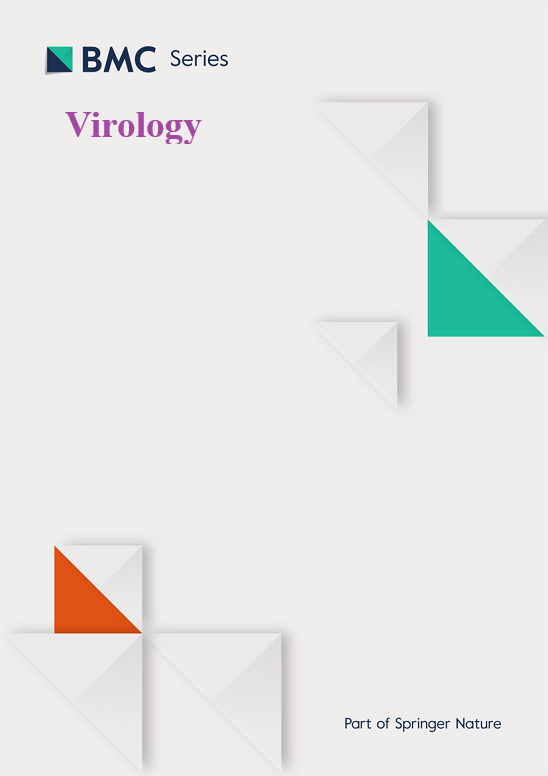The isolation and identification of a novel flavivirus from diseased Chinese soft-shelled turtle (Pelodiscus sinensis)
IF 2.8
3区 医学
Q3 VIROLOGY
引用次数: 0
Abstract
In recent years, mass mortality of Pelodiscus sinensis has occurred in many Chinese turtle farms and no etiological research on this disease has been conducted to date. The main clinical manifestation of sick P. sinensis was telangiectasis induced bleeding occurred in the limbs, calipash and plastron. After dissection, we found that the blood viscosity was reduced. Typical clinical manifestations included light abdominal cavity effusion, intestine and gastric wall edema and transparency. HE staining showed distinct lesions in liver, intestine, kidney, spleen, heart and lung tissues of infected P. sinensis. TEM observation showed that the spherical virions were approximately 30 nm in diameter. Partial genome of the pathogen was obtained by Illumina sequencing and then assembled and annotated. Phylogenetic analysis of the polyprotein amino acid sequences of this pathogen and other flaviviruses showed that it was closely related to Chinese soft-shelled turtle flavivirus isolate HZ-2017. RT-PCR detection of this virus in the sick P. sinensis from turtle farms showed a high infection rate. QRT-PCR analysis of viral distribution in P. sinensis tissues indicated that the kidney contains the highest amount of virus. The virus was tentatively named “Pelodiscus sinensis flavivirus” (PSFV). In this study, the results of PSFV pathological characteristic and genome information laid a good foundation for further study of this virus.
一种新型黄病毒的分离与鉴定
近年来,许多中国龟养殖场发生了中华白背龟的大量死亡,但至今没有对该病的病因学研究。患病中华按蚊的主要临床表现为四肢、腹部和腹部毛细血管扩张引起出血。解剖后,我们发现血液粘度降低。典型临床表现为轻度腹腔积液、肠胃壁水肿、透明。HE染色显示,感染的中华照虫的肝、肠、肾、脾、心、肺组织均有明显病变。透射电镜观察表明,球形病毒粒子直径约为30 nm。通过Illumina测序获得病原菌的部分基因组,并进行组装和注释。对该病原菌与其他黄病毒多蛋白氨基酸序列的系统发育分析表明,该病原菌与中华甲鱼黄病毒分离株HZ-2017亲缘关系较近。RT-PCR检测结果显示,该病毒在海龟养殖场患病中华按蚊中具有较高的感染率。QRT-PCR检测结果显示,肾脏中病毒含量最高。该病毒暂定名为“中华Pelodiscus sinensis黄病毒”(PSFV)。本研究获得了PSFV的病理特征和基因组信息,为进一步研究该病毒奠定了良好的基础。
本文章由计算机程序翻译,如有差异,请以英文原文为准。
求助全文
约1分钟内获得全文
求助全文
来源期刊

Virology
医学-病毒学
CiteScore
6.00
自引率
0.00%
发文量
157
审稿时长
50 days
期刊介绍:
Launched in 1955, Virology is a broad and inclusive journal that welcomes submissions on all aspects of virology including plant, animal, microbial and human viruses. The journal publishes basic research as well as pre-clinical and clinical studies of vaccines, anti-viral drugs and their development, anti-viral therapies, and computational studies of virus infections. Any submission that is of broad interest to the community of virologists/vaccinologists and reporting scientifically accurate and valuable research will be considered for publication, including negative findings and multidisciplinary work.Virology is open to reviews, research manuscripts, short communication, registered reports as well as follow-up manuscripts.
 求助内容:
求助内容: 应助结果提醒方式:
应助结果提醒方式:


